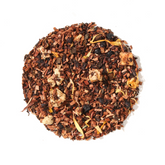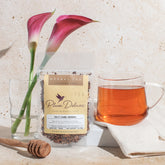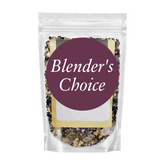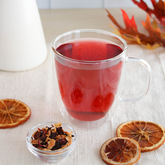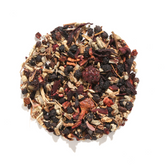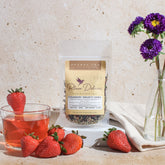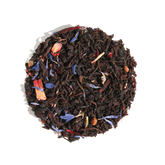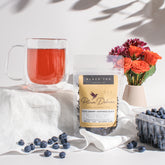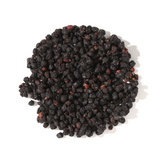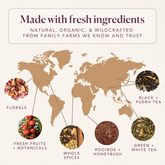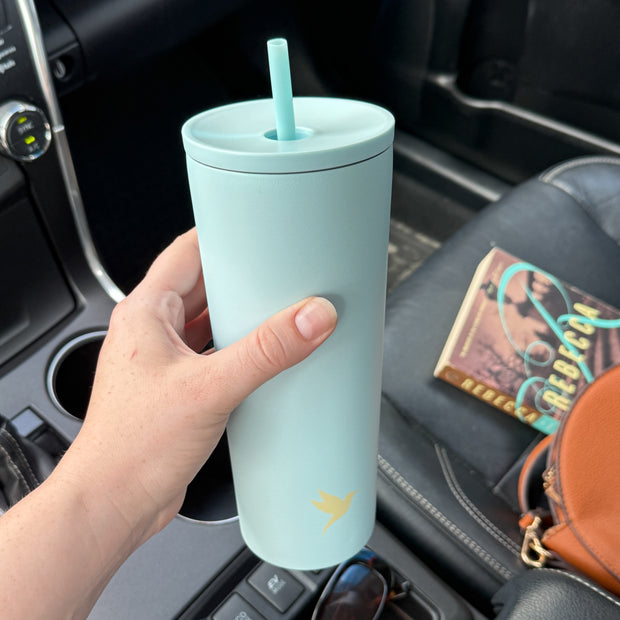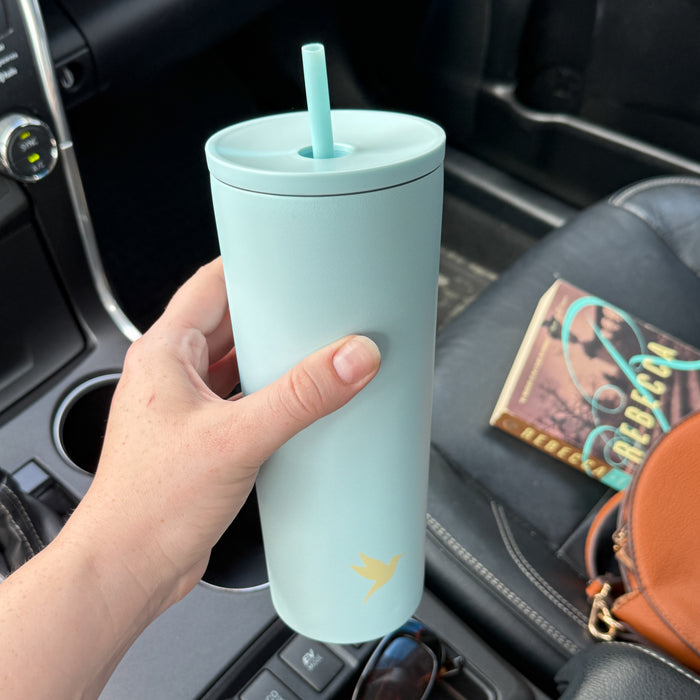The name “Darjeeling” comes from the Tibetan word Dorje, thunderbolt, and the Sanskrit word Ling, land. Huh. Do you suppose they have interesting thunderstorms and lightning displays in Darjeeling?
Today, we're talking about how to brew Darjeeling tea and a bit about the background and growing conditions of this unique tea.

Background and History of Darjeeling Tea
Like Assam, Darjeeling is both a place and a tea, specifically, a tea grown in the Darjeeling or Kalimpong districts of West Bengal, India. In fact, Darjeeling is only about 120 miles from Assam.
Unlike Assam tea, however, which is a distinct variety of the tea plant, Camellia sinensis var. assamica, Darjeeling tea is the Camellia sinensis var. sinensis plant imported—some say smuggled—from China in the mid-1800s as British colonials in India sought an alternative to expensive Chinese tea exports.
In 2004, Darjeeling tea became the first product in India to receive legal geographical indication protection under the World Trade Organization. A geographical indication (GI) allows products to be identified as coming from a specific location. It assures that the product has certain qualities, is made by specific methods, or simply comes from a particular place.

Environmental Factors
As with all tea plants—and all plant foods, for that matter—the environmental conditions in which the plants grow, i.e., the terrior (say tehr-WAHR), influence the tea flavor. As a result, different harvests from the same plants can yield different flavors. It makes sense: consider the sweet, tender leaves of young spinach or lettuce compared with the more bitter and tough nature of mature greens. The same is true for new growth on the perennial tea plant.
Harvest Matters
Darjeeling tea may be harvested four or five times during the growing season, between mid-March and November. Each harvest selects a different “flush” of growth.
First flush leaves, often two leaves and a bud, are the new growth after a dormant period. Because the leaves are new and small, the yield is limited. The tea is generally light-colored with a more delicate, floral flavor. Tea connoisseurs often consider this tea the best, and given the high popularity and limited supply, it costs more.
Darjeeling tea, however, is perhaps most famous for its second flush. These leaves are picked after the plants have been invaded by sap-sucking insects which cause plants to defend themselves by releasing insect-repellent chemicals. These chemicals imbue the leaves with a distinctive aroma and taste called “muscatel.” Darjeeling is not the only tea to exploit this natural phenomenon.
The wet season produces a “monsoon flush,” used mostly for blends, which is sometimes used locally, not exported. And the final flush of the year, the autumn flush, is similar to the second, but with a more muted flavor.
Plum Deluxe’s Royale Darjeeling Black Tea is a blend of the first- and second-flush leaves, combining the best with the best for a grand Darjeeling adventure.

How to Brew Darjeeling Tea
I default to brewing strong tea, but I found I liked the Darjeeling tea better when I backed off. If at first you don’t succeed, follow the instructions, right? So I did.
- I warmed one of my fine china teacups.
- I used a mesh “nest” tea infuser with plenty of room for the leaves to expand and work their magic.
- I measured 1 teaspoon of tea and checked it on the scale, aiming for two grams of dry loose leaves.
- I poured boiling water over the leaves and let them steep for the lesser of the recommended 4–5 minutes.
Wonder of wonders: it worked. This effort produced a tasty cup of tea, but as far as I’m concerned, it’s just a starting point. Once you figure out how to brew Darjeeling tea to suit your taste, it’s time to tweak and explore further options. Yeah, I’m into the flavorfest that is experimental tea drinking. Tea-nerd, tea-nerd, tea-nerd (as in neener, neener, neener).
05-Darjeeling-blends-with-tiger-stripes.jpg
What Does Darjeeling Tea Taste Like?
The Champagne of Teas is famous for its “muscatel” aroma and flavor. Okaaay, what is that? Muscatel is a sweet wine made from muscat grapes. The word can also refer to the grapes or raisins themselves, which are consumed all over the world. So the general consensus is that Darjeeling tea is black tea with a sweet, grape-like fruitiness.
Personally, when tasting it for the first time, I found the Royale Darjeeling edgy, close to the bitter line. I can see the connection to wine, hence the fruitiness, but it’s not a flavor I call “sweet.” I find wine bitter. Are you wine lovers also Darjeeling lovers? May I call you “The Tea Muscatels?”
The reddish, tiger-colored brew has a distinct flavor, to be sure, and familiar words to describe what Darjeeling tastes like are . . . elusive, also like a tiger. I find it edgy, threatening to bite if I try to take it a step further. See the tiger connection? But it’s beautiful and interesting so long as I proceed cautiously and let it be its natural self.

Darjeeling Plus
Given the lemony deliciousness of Fog Cutter black tea and the better-than-pancakes maple Heritage Blend black tea, Darjeeling plays well with other teas and flavors, so it works well in a blend.
As for dressing up your tea with sweetener, milk, and/or cream, well, that’s a matter of personal taste. I’m not generally a fan. If I were to add anything, it would be a squeeze of lemon or lime. The lemon in the Fog Cutter makes my taste buds sing. My next experiments will be with an iced Darjeeling tea, heavy on the lemon, and maybe with sweetener. A bit of honey may tame that edginess.
Whether Darjeeling tea earns the top spot on your favorite teas list or not, its claim as a top tea is legitimate in one way, for sure: it is the highest grown tea in the world. Top that, other teas.
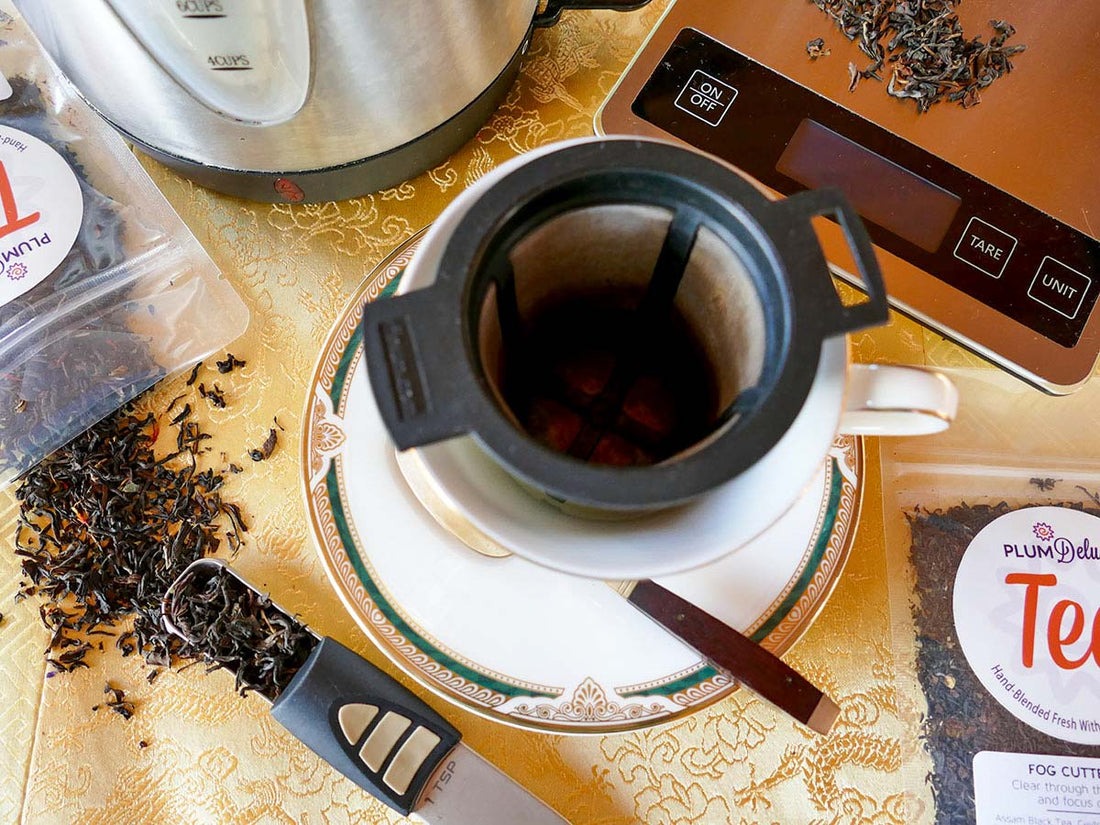
![Iced Tea Variety Pack [6-Pack Variety of Flavors]](http://www.plumdeluxe.com/cdn/shop/files/ICEDTEA_2.png?v=1746755007&width=165)
![Fall Tea Variety Pack [6-Pack Variety of Flavors]](http://www.plumdeluxe.com/cdn/shop/files/Fall_Tea_Variety_Pack.png?v=1754953749&width=165)

